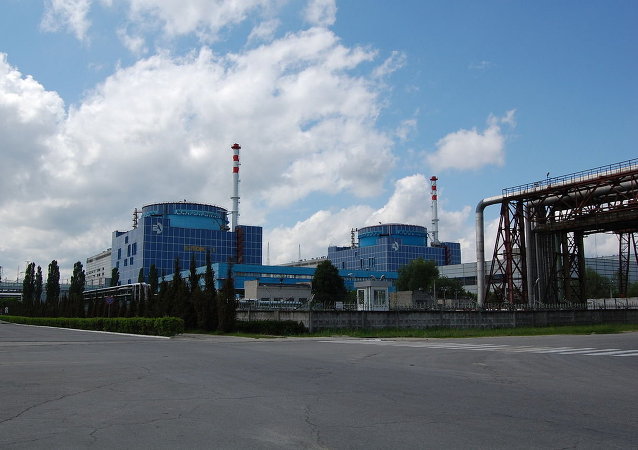EU-Ukraine: Energy Integration?
In terms of economic integration between the EU and Ukraine, the most significant sector is energy.
Over the years Energoatom has pursued a policy of diversification of suppliers, and the opening of their procurement system to more transparent practices, bringing the company into line with best commercial practice.
The next important milestone in this process of integration is the pilot project of the « Energy Bridge » between Ukraine and and the EU, which « represents a first strategic step on the way to full synchronisation of the Ukrainian and European energy systems,” according to Yuri Nedashkovsky the President of the Ukrainian state-owned nuclear power generating company Energoatom.
The pilot project envisages the start of the export of electricity of 1550 MW by 2019 with the potential to grow to 2550 MW, and full integration with the ENTSO-E power system by 2025.
It involves switching off one power unit from the Khmelnitsky Nuclear Power Station in Western Ukraine from the Ukrainian System and dedicating the export of electricity generated by this unit to the EU via two routes: the first through a reconstructed overhead power transmission line to Rzeszów in Poland, and a second via an existing line to the substation Albertirsha (Hungary) after modernisation of a second substation in Western Ukraine.

The project will add 1,000 MW of nuclear power to the existing export potential of Burshtinsky Island in Ukraine, which is currently supplied exclusively by thermal generation (550 MW). Energoatom produces up to 65% of Ukraine’s total power requirement, but in recent years total consumption of nuclear power in the country has declined from 88 million kWhs in 2015 to a forecast of 82 million kWh this year. This makes the export of power to neighbouring Poland an attractive commercial opportunity.
« We expect, as a result of having long-term export sales, to receive sufficient revenues for infrastructure development in Ukraine, increasing the efficiency and capacity of our power units, as well as completing two power units of the Khmelnitsky Nuclear Power Plant,” said the head of Energoatom.
Energoatom will be responsible for the modernisation of the dedicated power unit at Khmelnitsky and its re-connection to Burshtyn Island, as well as providing for any reserve and auxiliary needs of the unit when operating on the ENTSO-E power system. These works will cost €47 million and include a technical solution to to provide a backup power source directly at the Khmelnitsky Plant with capacity to operate as an independent ENTSO-E power system. This independent source of electricity will increase supply security, and ensure there will be no “blackouts”.
Ukraine’s partner in Poland for the project is the Polish energy company Polenergia. One of the advantages of the project for them will be the addition of more clean green nuclear generated electricity to the grid, instead of thermally generated power from coal fired stations, which Poland relies on heavily, enabling a reduction in carbon emissions for the country.
Commenting on the project Grzegorz Stanislavsky, the Vice-President of Polenergia said, « It is not only the economic component, which will certainly be beneficial to all parties. For me personally it is very important to be able to assist Ukraine in these difficult times that the country is going through. Cooperation in the energy sector is further proof of the friendly relations between Ukraine and Poland.”



